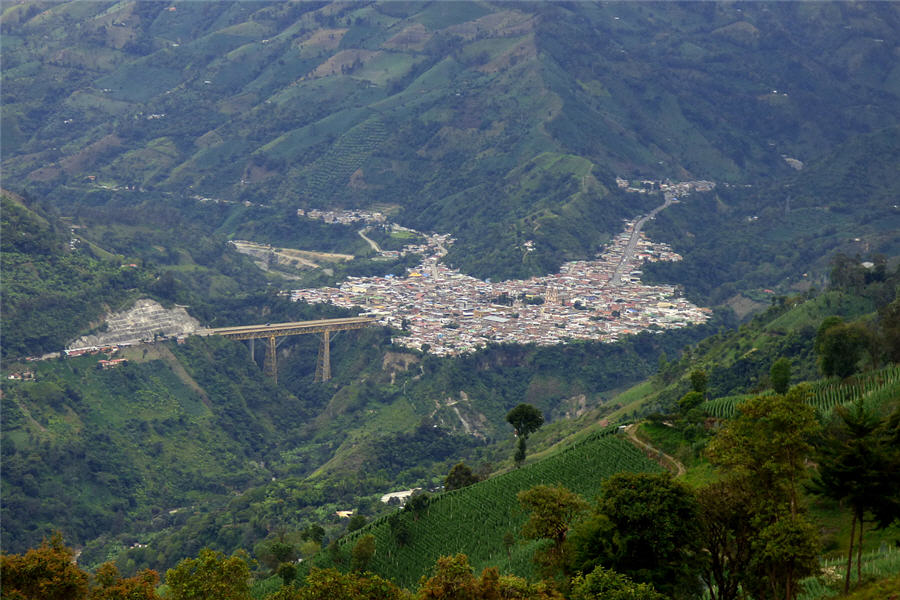
Voters in the world’s second-largest producer of mined copper and zinc cast out some fierce opponents of giant mines, ushering in a change of guard that could potentially lure investments to some of Peru’s most impoverished regions.
Citizens in Cajamarca, the South American nation’s poorest region, elected pro-investment candidate Mesias Guevara, ending the rule of an anti-mining movement that has governed the region for the past eight years. In Moquegua, where Anglo American Plc is building the $5.3 billion Quellaveco copper project, and Apurimac, where MMG Ltd. operates the Las Bambas mine, winning candidates didn’t voice opposition to mining.
It is going to be more complicated for Southern Copper Corp.’s Tia Maria to get that social license with a governor that has been openly opposed to the project.
While governors can’t directly veto mining projects, their support is key to winning local communities’ approval. In the past, regional leaders including former Cajamarca governor Gregorio Santos have marched alongside groups that oppose projects. Development plans worth billions of dollars remained stalled in several regions due to local opposition.
“This time, we haven’t seen the heightened tensions that were the norm in the previous election — the debate around mining issues has moderated,” said Pablo de la Flor, executive director at Peru’s mining, oil and energy association SNMPE. “We still have seen some candidates adopting more critical views, especially in mining regions, but we think that’s part of the tensions arising during any campaign.”
President Martin Vizcarra, a former regional governor, aims to boost annual mining investment gradually to $8 billion when his term ends in 2021, compared with $4.6 billion forecast for this year. While mining investment in Peru’s copper-dependent economy has rebounded 27 percent this year through October, the nation could see more inflows as sentiment shifts. Cajamarca could attract as much as $18.2 billion investment in new projects, according to the Mines and Energy Ministry. The region accounted for 7 percent of total mining investment in the first 10 months of the year.
Cajamarca Large Projects Owner Investment Michiquillay Southern Copper $2.5bn Yanacocha Sulfuros Yanacocha $2.1bn Conga Yanacocha $4.8bn El Galeno Lumina Copper $3.5bn La Granja Rio Tinto $5bn
The conditions are ripe for an increase in mining investment in Peru and there’s no reason why Cajamarca shouldn’t develop new projects if local communities support them, said Miguel Roman, a lawmaker who chairs the energy and mining committee in Congress. Mining companies that show respect for the environment should be welcomed, he said.
“Before, there was a total rejection of even evaluating these projects but now I think it could happen,” he said.
Roman is a member of the Popular Action party that will govern Cajamarca, two other regions and the capital Lima for the next four years. The national government needs to work with communities in areas with mining potential and allay concerns about the environmental impact of future projects to reduce the risk of social conflict later on, he said.
“It’s very clear to us that private investment is the motor that should drive the economic development of our people,” Ramon said.
In some regions including Arequipa, anti-mining candidates prevailed. Southern Copper Corp.’s $1.4 billion Tia Maria project has been stalled for years amid communities’ concerns over the potential impact on water and air quality. Elmer Caceres, who won the gubernatorial race, spoke against Tia Maria during his campaign. He has also opposed other major projects, including Teck Resources Ltd. and Mitsubishi Corp.’s $1.2 billion copper and gold Zafranal mine, and Cia. de Minas Buenaventura SAA’s Tambomayo mine.
Cajamarca governor-elect Guevara didn’t respond to requests for comment by phone and text message. Caceres didn’t immediately reply to emails and calls to his political party seeking comment.
“Arequipa is the main risk we are seeing as Caceres is clearly against mining projects, even against Buenaventura’s, which is already operating,” said Erika Manchego, an analyst of economic studies at Bank of Nova Scotia in Lima. “It is going to be more complicated for Tia Maria to get that social license with a governor that has been openly opposed to the project.”
In Moquegua, the governor-elect Zenon Cuevas went from leading anti-mining protests that turned violent in 2008 to adopting a more moderate view in this election.
“Zenon Cuevas supports mining as long as it respects labor rights and that contracts stay in Moquegua whenever possible,” said Yovana Valdez, the former president of the Moquegua Chamber of Commerce and a member of Cuevas’ political party. “He wants socially responsible mining, he wants Anglo to understand the region, to keep a fluid communication and an investment that benefits the region.”
In Puno, where Bear Creek Mining Corp. wants to build a $585 million lead, silver and zinc mine, governor-elect Walter Aduviri has said he will be talking to small miners, but he said he has a critical opinion of large, multinational mining companies. As much as $1.76 billion could be invested in the region if all mining projects went ahead, according to the Ministry’s report.
“In the end I think pragmatism will prevail,” said Jose Carlos Requena, a partner at Lima-based political research group 50+1. “They’re going to opt for co-existence. I don’t see them becoming an obstacle for these projects.”
(By Laura Millan Lombrana and John Quigley)